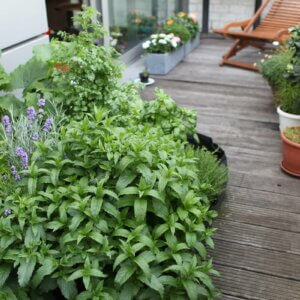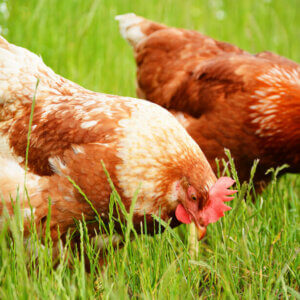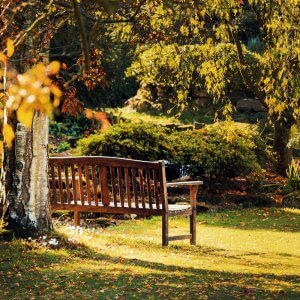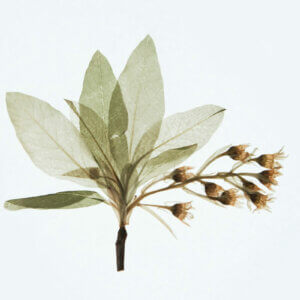We’re all familiar with onions, but with this tasty vegetable, there’s more than meets the eye. Read on to learn more facts about onions that you probably didn’t know!
1. Onions Played A Surprising Role In The Olympics
In the first century, the Greek physician Dioscorides advocated a diverse array of medicinal uses of onions. Before competitions, Greek athletes in the Olympic Games fortified themselves by eating pounds of onions and drinking pure onion juice.
One has to imagine that they could have defeated their rivals with their breath alone. Also, before entering into the pit of the Coliseum, contenders rubbed their bodies with onion juice in the belief that the essence of the onion provided energy, strength, and courage.
2. Pharaohs Were Buried With Onions
In ancient Egypt, onions were considered sacred, an embodiment of eternity and an object of worship. Onions were buried with the pharaohs who believed that because onions prevent thirst, they were necessary on their journey to the afterworld. Artwork of onions also embellished the walls of the Egyptian royalties’ tombs.
The ancient Roman Empire held onions in high esteem, heralding their stellar medicinal properties that were said to cure night blindness, insomnia, toothaches, lumbago, and dysentery. The Roman people also relied on onions to treat dog bites and to help heal mouth sores.
3. Onions Were Praised For Their Health Benefits As Early As The Sixth Century B.C.
India’s world-famous medical treatise, Charaka-Sanhita, touted the amazing health benefits of onions. A diet fortified with onions was recommended for persons suffering from inflammation of the eye, heart disease, indigestion, kidney stones, and stiff joints. Onions are also a potent diuretic, proven helpful in treating water retention, swelling, and inflammation.
The flavor of the onion is created by the action of an enzyme that interacts with sulfur in the soil and produces sulfur compounds in the onion plant.
These powerful sulfur compounds are anti-fungal and anti-microbial; thus, onions have impressive medical value. Eating raw onion has long been known to help thin the blood and lower blood pressure.
4. Onions Are One Of The Earliest Cultivated Crops
Native to Central Asia, onions have been cultivated for more than 5,000 years. However, our ancestors discovered and began eating wild onions long before that. Wild harvesting sustained primitive man, and the humble onion was highly prized in the diet as wild onions could be eaten raw, cooked, or dried and stored to consume when food was scarce.
Today, onions are a staple in the cuisine of cultures worldwide. Onions are cooked as a vegetable side dish, prepared as part of soups, stews, and sauces, eaten raw or used to make relishes, pickles, and chutneys.
5. Americans Consume An Average Of 20 Pounds Of Onions Per Person
If your family is like mine, you will likely use a lot more. So why not raise your own? If you have an exceptionally bountiful crop, onions are an excellent item to sell at your local farmer’s market.
No matter if you start onions from seeds, bulbs, or transplants, you will likely spend one-tenth of the money on growing supplies than you would if you were to purchase the same amount of onions from the market.
6. Libya Boasts The Highest Consumption of Onions
Libyans eat an average of 68.8 pounds of onions per person annually. Average world onion consumption is estimated at approximately 14 pounds per capita, per year.
Worldwide, onions rank as the sixth leading vegetable crop. In the United States, onions are the third leading vegetable commercially cultivated.
7. There’s Quite A Variety of Onions
Perhaps you’ve already cultivated onions in your garden but have been somewhat disappointed by a less than thrilling harvest of small bulbs. It may not be your soil or growing technique that’s at fault. You may have started with the wrong onion.
Bulbs vary in size, shape, color, and pungency dependent on soil conditions and growing temperatures. Warmer growing areas tend to produce a milder and sweeter flavored onion. Each different type of onion presents flavor and texture attributes or growing condition requirements that make it the best type of onion for your particular growing conditions.

When it comes to size, onions range from quite tiny, at less than 1/2 inch around, to large orbs 5 inches or more in diameter. A seasonal vegetable, onions are divided into two main classifications. Spring and summer onions, available March through August, and Fall and Winter onions, available August through May.
8. Storage Life Depends on the Onion Variety
Sweet and mild flavored, spring and summer onions, with lighter, thinner skin and higher water content, have a shorter storage life. Fall and winter onions tend to have thicker skins, are darker in color, and contain less water: thus, an extended storage life. Winter onions also tend to provide a heartier flavor and present a more pungent aroma.
9. The Onion Itself Doesn’t Make Us Cry
An onion’s pungency results from the level of sulfur-rich volatile oils the onion contains. During peeling or slicing, the volatile oil is released. The oil released is what causes eyes to water and burn when chopping an onion.
10. Onions Flourish In A Wide Range Of Soil Conditions
Hardy, easy to grow, easy to transport, and easy to store, onions are an ideal crop to add to the homestead garden. Commercially, most onions are grown from the plant’s small seeds sown in early spring. However, most home gardeners get a jump on the growing seasons by starting onions from small bulbs or transplants. Contact your local county extension office for helpful advice on when to plant different varieties of onions in your particular part of the county.
11. Onions Love The Sun
Select a sunny spot in the garden for your onion patch. Onions can tolerate a bit of shade but prefer a location with full sunlight. Onion bulbs grow in response to daylight. When daylight hours reach a certain level, onions start forming bulbs, also known as bulbing.

Short-day onions require only 10 daylight hours to develop to their full potential. Long-day varieties require 15 hours of daylight to form bulbs. Savvy gardeners advise choosing day-neutral varieties, which perform well regardless of day length and do well in most any region.
12. Onions Don’t Fare Well In Heavy Clay Soils
Onions are heavy feeders and do best in nutrient-rich, loamy, well-drained soil. Before planting, work the soil well, breaking up dirt clods and removing rocks and weeds.
Work the soil at least 8-12 inches deep. Avoid working wet soil, which causes soil compaction. Compacted soil keeps air and moisture from reaching plant roots, thus hindering vigorous growth.
Supplement soil with generous amounts of well-aged herbivore manure (cow, sheep, horse, goat, llama) and incorporate well into the soil. Worm castings are also an excellent soil supplement for growing onions.
The soil mixture for onion cultivation should be about 20 percent well-aged organic compost. Avoid commercial fertilizer supplements that contain sulfur, which reduces the sweetness of the harvest.
13. In The Produce Section, The Onion Is Surrounded By Relatives
The common onion (Allium cepa L.), also known as the bulb onion, is a popular vegetable, widely cultivated around the globe. Onions are Asian herbs, members of the lily with pungent edible bulbs: The most cultivated of all plants in the genus Allium.
The genus Allium includes leeks, chives, shallots, and garlic as well as pearl onions, green, red, yellow onions, and Chinese onions. The term ‘onion’ is often used as the generic name for any of the hundreds of plants in the genus Allium.
Related Post: Growing Shallots
14. There Are Short-Day, Intermediate-Day, And Long-Day Onions
Experienced onion growers report that success lies in allowing the plants sufficient time to form solid, large bulbs. If you live in an area with mild winters, the best way to grow the sweetest onions is to plant bulbs or transplants in late summer or early fall and let them grow and mature through the winter.
Sweet onions are mild and flavorful, lacking the sharp and slightly tart taste of winter onions. They are a mouth-watering treat when sliced very thin and served in salads, sandwiches or with your favorite burger.
Short-Day Onions
When selecting sweet onion bulbs for over-winter planting, look for varieties known as short-day onions. This type flourishes despite the short days of winter. Short-day varieties are considered cold-hardy down to 20 degrees Fahrenheit.
Short day onions produce the best bulbs when given 10 or more hours of daylight: ideal for southern regions in United States plant hardiness Zones 7 or warmer.
If you reside in a colder climate but would still like to cultivate sweet onions, they can be started indoors and transplanted out in early spring. Grown this way, they will be mild and sweet, but will not mature to the same magnificent size as those grown outdoors all winter long.
Favorite varieties of short-day sweet onions include:
- Maui Maui
- Texas Sweet
- Red Texas Sweet
- Georgia Sweet
- Bermuda Sweet
- White Granex
- White Bermuda
Intermediate-Day Onions
Also known as day-neutral onions, intermediate-day onions are cold-hardy to 0 degrees Fahrenheit. Intermediate types of sweet onions do fine in colder climates in plant hardiness Zones 6 and colder.
A variety known as Candy Onion is the most widely planted variety of day-neutral onions. Red Sweet and Cimarron are also widely grown.
Long-Day Onions
Requiring 15 hours of daylight to promote bulbing, long-day onions are also the slowest type of onion to mature. If your growing region does not receive this amount of average daylight, long-day onions will never form bulbs. Plan 90-110 days from planting to harvest time.
Favorite varieties of long-day onions include:
- Walla Walla Sweet
- Spanish Sweet
- Vidalia
References
- Onions, National Onion Association
- Watch Your Garden Grow – Onions, University of Illinois Extension
- Growing Fresh Market Onions, Garlic, And Leeks, Wisconsin Farm Center










































Leave a Reply